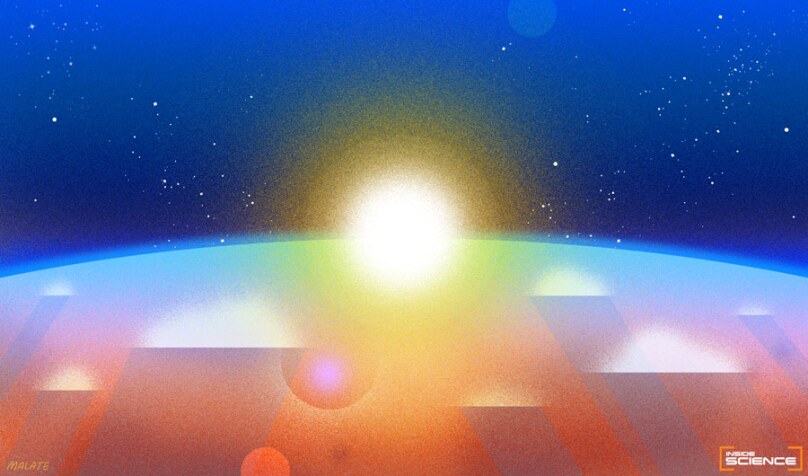We’re Ending Our Coverage, But Science Goes On

Abigail Malate, AIP
Inside Science has shared the wonder and excitement of science with curious readers, viewers and listeners for well over 30 years. Our stories have appeared in many forms of media, from vinyl records to video tapes to our current website. Through all those changes, our staff and contributors have strived to produce engaging, resonant stories about how research and reason benefit humanity, and we’ve been so pleased to share them with you.
It’s with great sadness that the team and I share that we will cease publishing new articles, videos and other content on March 31. That’s because the organization that founded Inside Science, the American Institute of Physics, has decided to reallocate its finite resources to further support advancing the physical sciences.
Our team has reached many millions of people over the years, both via our own channels and through syndication to major media outlets. It’s been a privilege to be involved with this publication, and I’ll certainly miss connecting with our audience and working with the many people who have contributed to its rich history. I’ll also miss the chance to develop special projects like this exploration of the incredible potential
The website, the YouTube Channel
Our team is proud of our record of generating stories that continue to reach people long after they are first released. This includes YouTube videos about fireworks
Many of our other news stories and feature articles continue to enlighten readers about numerous important issues, such as this examination of the validity of modern climate science
We’ve also published mind-bending ideas
Editor Catherine Meyers makes every story she touches better. She also writes so well: One of her favorite stories explained the math
When I arrived at AIP in 2007 to work on a video program called Discoveries and Breakthroughs Inside Science, Karin Heineman was the primary field producer. Her favorite videos from more than two decades of video producing include gems about the amazing properties of spider silk
Karin is thankful that her job afforded her the opportunity to travel around the country on shoots for about 10 years, to all sorts of fun and sometimes challenging environments. She was seasick on boats in the ocean, sweated through hot, dry, rocky deserts, climbed steep mountains carrying camera gear, and got lost many times in big cities. She visited national laboratories and hundreds of university physics, chemistry and engineering labs -- all of them in different stages of messiness and chaos, with grad students thriving in it all. The shoots may have come to end, but the memories will stay with her forever.
All of our staff and our wonderful array of contributors -- from a Pulitzer Prize winner to so many incredible interns -- have benefited from the researchers who spoke to us. One of the thrills of the job is asking people what they know, how they know it and what they want to figure out next.
Thank you all for coming with us on the journey -- for reading, for watching and for staying curious about our expanding universe.

AIP
A personal note from me:
After working on video stories for the first several months after I joined the American Institute of Physics, I published my first Inside Science news story in early 2008. Delightfully, even though I was pretty green, it was syndicated by LiveScience and went the late aughts version of viral, reaching the front page of Yahoo!. We’ve had many other successes, too many to celebrate here. But to my many mentors, a list that includes Jim Dawson, Ben Stein, the late Jim Allen, Jason Bardi and Larry Fishbein -- thank you all. And also, my most heartfelt thanks to Emilie Lorditch, who hired me. She worked so hard for so long to make it possible for me to find my niche in science news.
I’m looking forward to new adventures. If you have appreciated my stories about sports science or my interviews with scientists, or you’re craving the occasional dad joke, please follow me on Twitter
One of the greatest pleasures of this job has been working with a fabulous group of freelance writers. Working with them taught me to be an editor. From veteran writers like Joel Shurkin
I’ve also enjoyed the chance to work with numerous fantastic interns and early-career writers. To each of you: thank you. It’s such a pleasure to see your careers blossom.
It’s also been wonderful to have the chance to host a podcast
I realize now that taken together, these interviews tell a story about how people become scientists. The lessons my guests have shared are meaningful and resonant, about how difficult yet rewarding it can be to find your niche, about the ways life sends you down unexpected paths, and about how people can excel by bringing the sum of their previous experience with them as they move forward. I hope these conversations brought listeners and viewers some inspiration as well.
My time here at Inside Science has been an absolute privilege. Thanks to everyone who read, watched and contributed to this publication over the years.
- Chris Gorski


